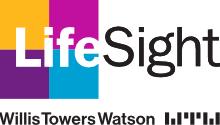The essence of strategy then is to provide a plan of direction to achieve the longer-term aims of the organisation.
So where does the new HRD begin with developing her HR strategy?
HR can help deliver better business performance
Five top tips for HR professionals
What do innovative HRDs have in common?
Step one: understanding the business
She must first know the terrain, resources, and current barriers if she is to develop a sustainable plan. Knowing the business as ever is key.
Sun Tzu in the Art of War, written 2,000 years ago, stated: "He will win who knows when to fight and when not to fight".
The maxim encapsulating a profound lesson; before any action first know organisational strengths and weaknesses.
The HRD needs to look at all the data at their fingertips and that currently beyond her fingertips.
This includes assessing factors such as workforce demographics, skills gaps, and employee engagement levels, plus big data insights or even simple coffee break chats- anything that tells them about the state the organisation is in.
For more clarity, a SWOT (strengths, weaknesses, opportunities and threats) analysis can provide structure and priority to the plethora of business data generated.
The analysis should consider both internal and external factors such as the current workforce, organisational culture, market trends, and competition.
Step two: defining HR objectives
Dave Ulrich describes the purpose of strategic HR as being to turn business strategy into HR plans.
It does this by addressing the fundamental question: what are the major business goals HR must support?
To ensure alignment between HR plans and business objectives, it is important to involve key stakeholders in the planning process.
Investing the time to conduct those discussions one-to-one will pay big dividends.
An appreciative nod here to McKinsey which refers to this approach as 'pre-wiring' i.e., conducting individual discussions before the group meeting to gain buy-in.
Providing the twin value of insights from the senior team and reducing the risk of adverse reactions later when presenting to the board.
Thereby (hopefully) avoiding hearing those pejorative words 'it’s an HR initiative'.
Step three: HR strategy
Between understanding the business state and agreeing collectively on HR objectives, exists the clear gap for potential improvement and how to achieve it.
So now the HRD can start to develop the strategic interventions to close that gap.
These will differ depending on the organisation and the context.
The initiatives can be divided into specific projects and resourcing teams to deliver those interventions.
Step four: communicating the 'why' of the strategy
It is also important to communicate the 'why' behind the plan to build support across the organisation.
The HRD must articulate the reasons for implementing the plan and its benefits.
By helping employees understand how the plan fits into the bigger picture to drive organisational success, she can build buy-in and support at all levels of the organisation.
Step five: implementation and monitoring
The strategy is implemented and now the plan meets reality. The HR plan that delivers must remain flexible at all times to feedback.
Lessons can be applied here from lean start up methodology on the 'minimal viable product' gaining maximum feedback from the least amount of effort.
Being sensitively acute to the feedback from all stakeholders on what is working and what needs a 'little tinkering' (or more) will ensure her plan truly delivers.
Gary Tomlinson is chief learning officer at Pando Training










